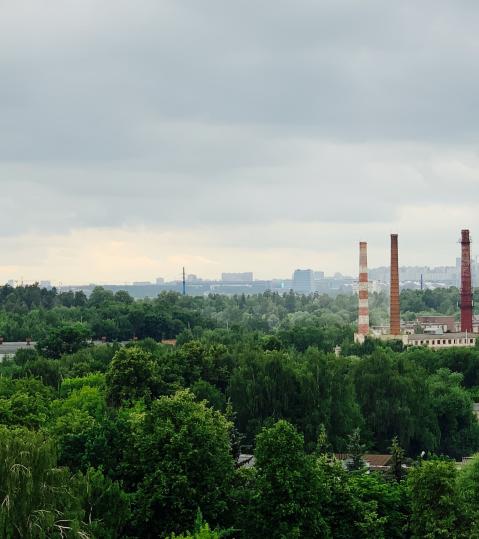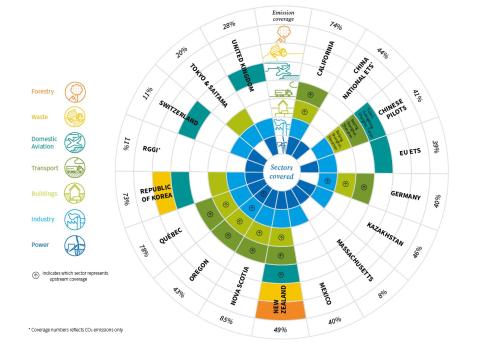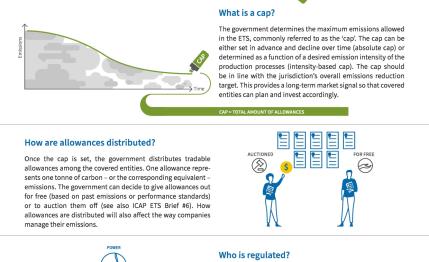Scope and Coverage

Scope and Coverage
Defining the scope and coverage of an ETS entails decisions on which GHGs and sectors should be included in the scheme, and what the minimum size (threshold) should be for the emitters involved. Moreover, the point of regulation, referred to as upstream or downstream, determines the point in a supply chain that is targeted by an ETS. In theory, the broader the scope of an ETS and the more comprehensive its coverage, the higher its environmental effectiveness and economic efficiency. In practice, certain limitations, like which parts of a supply chain have the best abatement options, may affect feasibility, fairness, and the appropriate incentives.
Carbon dioxide (CO₂) is the most common greenhouse gas and is therefore usually the first gas covered in an ETS. When other gases, like methane (CH4), nitrous oxide (N₂O), or fluorinated gases (SF6, HFC, PFC, etc.) are included in a system, CO2 still serves as the point of reference and is the gas against which others are measured, expressed in terms of tons of carbon dioxide equivalents (CO₂e). In some sectors, such as electricity and large industry, emissions are easier to measure and account for than in others, which makes them the most feasible for initial inclusion in an ETS. Other sectors like agriculture or transport may then follow at a later stage or be addressed by other measures. Minimum size thresholds in a sector determine when an installation must participate in an ETS, based on its emissions, units of production, or installed capacities. Limiting the number of covered entities to larger ones reduces the administrative burden in system management and can help avoid disproportionately high transaction costs for smaller businesses. An ETS that covers a variety of gases, sectors, and installations with a range of different abatement options fosters competition and thus decreases overall mitigation costs.
Determining the point of regulation means deciding where along a supply chain actors should be held responsible for their emissions. This involves weighing the feasibility of measuring emissions of different actors, the number of actors, and their ability to mitigate their emissions. Upstream regulation focuses on implied emissions from natural resource extraction, such as coal mining or oil extraction, even if these are not burned at that point. Downstream regulation addresses the end users on the supply chain, such as consumers. Usually, it is most effective to regulate actors with the greatest control over their abatement options; often, this is at the point where the gases are actually emitted, for instance at a power plant or steel mill, rather than the embedded or indirect emissions involved in a product either upstream or downstream.
For further information, see:
- Step 3 of ‘Emissions Trading in Practice: A Handbook on Design and Implementation’ by the PMR & ICAP
- ICAP ETS Brief # 1

Scope and Coverage for selected ETS (2022)

